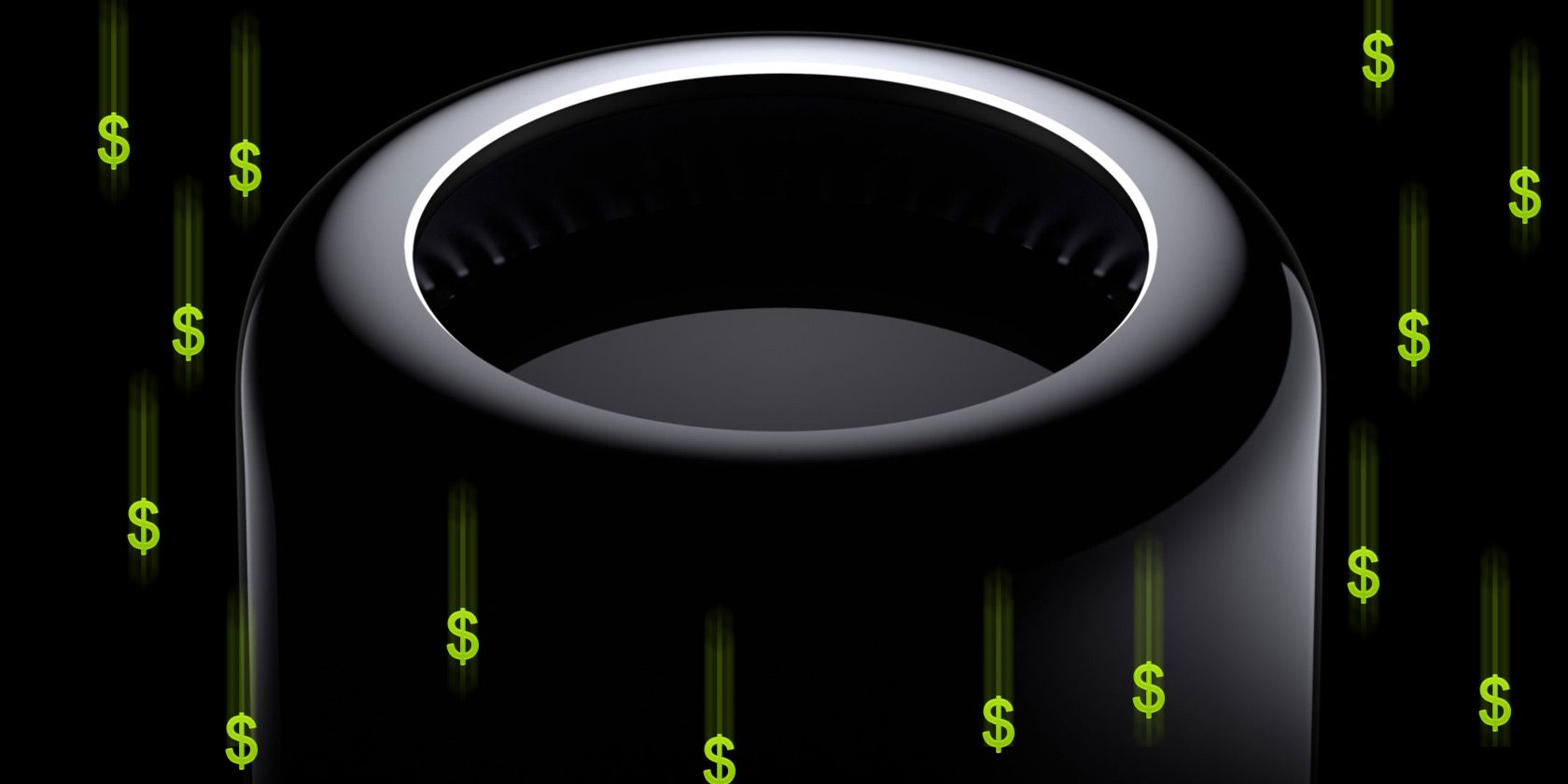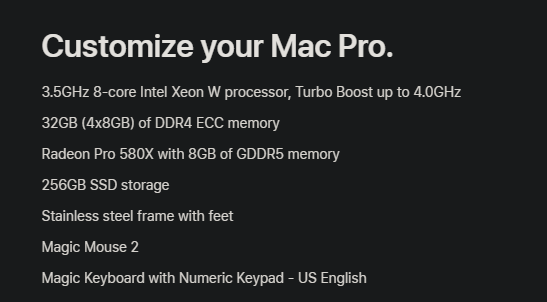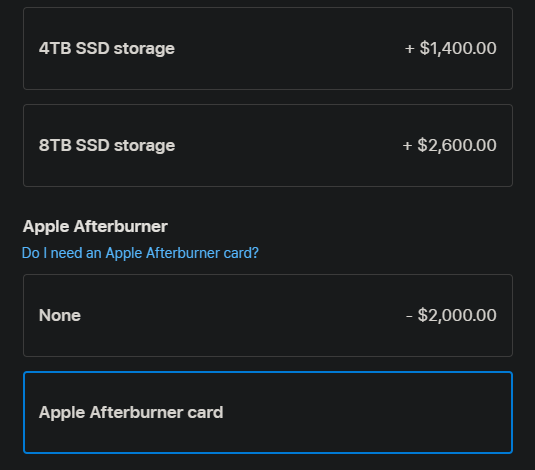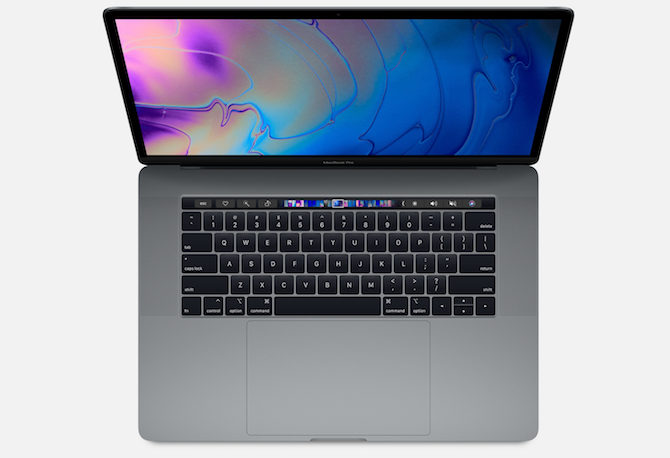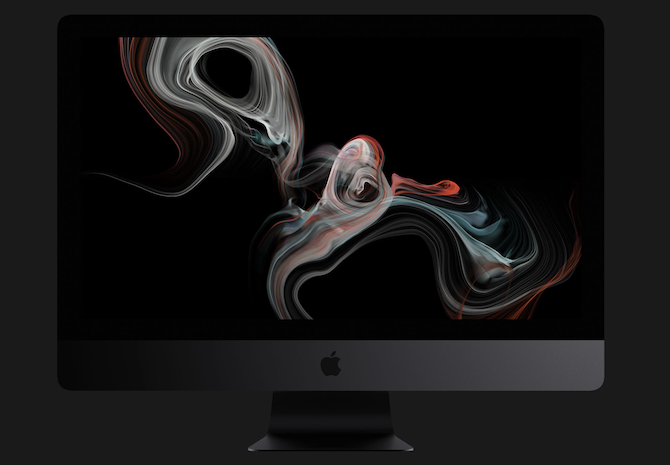The Mac Pro is the highest-end computer that Apple sells. It's an extremely powerful machine with an eye-watering price tag to match.
But what is the Mac Pro actually used for, and who needs a Mac Pro? Let's look at what the machine offers and find out why Apple makes such a powerful desktop computer.
What Is the Mac Pro?
The Mac Pro is an Apple desktop computer designed for professional work. Don't confuse its name with the similar MacBook Pro or iMac Pro, which are different machines. We'll touch on those later.
Apple has released three generations of Mac Pro. The first model, which used a typical "tower" look, was introduced in 2006. It was succeeded by the cylindrical Mac Pro in 2013, which had several issues, including a lack of upgradability.
The most recent Mac Pro launched in December 2019 and returns to the standard "desktop tower" setup. This is the Mac Pro we'll consider here, since the old models are too outdated to recommend nowadays.
Mac Pro Specs and Upgrade Options
Unlike the 2013 Mac Pro, Apple's current revision allows for tons of customization (including on your own after purchase). When you head to Apple's Mac Pro purchase page, you'll see two configurations. One is the standard tower setup, which starts at $5,999. You can also purchase it for use in a rack starting at $6,499, which is mostly for business use.
If you stick with the cheapest possible Mac Pro ($5,999), it comes with the following specs:
- 3.5GHz 8-core Intel Xeon W processor, with Turbo Boost up to 4.0GHz
- 32GB (4x8GB) of DDR4 ECC memory
- Radeon Pro 580X with 8GB of GDDR5 memory
- 256GB SSD storage
Each Mac Pro also comes with a Magic Mouse 2, Magic Keyboard with Numeric Keypad, and a USB-C to Lightning cable. A monitor is not included.
You can upgrade the CPU, memory, graphics hardware, and storage if the base isn't enough for your needs. There are too many upgrade options to list out here, but a few examples to give you an idea include:
- An additional $1,000 to upgrade to a 3.3GHz 12-core Intel Xeon W processor, with Turbo Boost up to 4.4GHz.
- $1,000 more to upgrade to 96GB (6x16GB) of memory.
- An extra $1,600 for two Radeon Pro W5700X cards with 16GB of GDDR6 memory each.
- An additional $800 for 2TB of SSD storage.
- $2,000 more for an Apple Afterburner card, which helps with extremely demanding video editing.
- $400 extra to replace the computer's feet with wheels so you can easily move it.
Extra Mac Pro Accessories
Apple offers a few additional accessories before you check out. The Pro Display XDR is a 32-inch 6K screen that's available in either standard glass or Apple's "nano-texture" glass. The standard model costs $4,999, while the nano-texture glass is $5,999.
The monitor doesn't include a stand, so you'll have to pay another $999 for the Pro Stand. This allows you to adjust the monitor's viewing angle however you like and easily detach the magnetic connection in order to change the orientation or remove the display. If you'd rather, you can instead buy a VESA Mount Adapter for $199.
Clearly, if you have money to spend, you can put a lot of power into the Mac Pro. Just for fun, if you upgraded everything in the Mac Pro to its absolute max, here's the setup you'd have (along with the cost of fully upgrading each item):
- 2.5GHz 28-core Intel Xeon W processor with Turbo Boost up to 4.4GHz ($7,000).
- 1.5TB (12x128GB) of DDR4 ECC memory ($25,000).
- Two Radeon Pro Vega II Duo with 2x32GB of HBM2 memory each ($10,800).
- 8TB SSD storage ($2,600).
- Apple Afterburner card ($2,000)
- Frame wheels ($400)
This all comes to the staggering sum of $53,799. Adding the Pro Display XDR would cost another $4,999, or $5,999 for the nano-texture glass model. And this doesn't include AppleCare+ or preinstalled software like Final Cut Pro X, which come at additional cost.
What Is the Use of a Mac Pro?
Of course, what the Mac Pro offers exceeds the needs of 99% of people. This might lead you to ask what the use of a Mac Pro is. Let's take a look.
Top-of-the-Line Image and Video Editing
People who work with terabytes of ultra-high-definition video footage need a powerful computer to handle it all smoothly and prevent hangups. The Mac Pro's powerful video cards, massive amounts of RAM, and speedy SSD storage are built for tasks like that.
While you might balk at the extreme price of the Pro Display XDR, having accurate color display is essential for graphic designers and other creative professionals. They need a clear representation of how their work will look outside the screen, which is where premium displays like this shine.
Heavy-Duty Graphical Performance
Demanding 3D apps, such as engineering design software, require a lot of video resources. Professional-grade software is a lot more difficult to run smoothly than consumer-level apps, which is why specialized industries need a powerful computer like the Mac Pro.
This means that computer-aided design, medical imaging, emulating multiple instances of an app at once, and similar tasks require much more power than a standard computer can provide.
Gaming and Game Development
While Macs aren't primarily known as gaming machines, the Mac Pro has enough power to run most games compatible with macOS. Of course, you can always use BootCamp to install Windows on your Mac and get access to the wealth of games on that platform.
Game developers who prefer Macs could also use the Mac Pro's power to work on their titles.
Mac Pro Alternatives
Frankly, if you're wondering whether you need a Mac Pro, you almost certainly don't. The machine is designed for a specific niche of professionals who need a powerhouse of a computer. Unless you are a professional in the fields of video editing, image editing, or 3D rendering, you very likely do not need a Mac Pro.
Knowing that, which Mac should you get instead? Let's consider a few options based on your use case.
MacBook Options
If you frequently work on the go, a MacBook is obviously the best choice.
For light work like web browsing and word processing, the MacBook Air is a great all-around machine. It starts at $999 and goes up to $2,249 if you max out everything.
Meanwhile, if you need portable power, take a look at the MacBook Pro. The 13-inch model starts at $1,299, while the 16-inch model begins at $2,399. Maxing out a 13-inch MacBook Pro results in a $3,599 price tag, or $6,099 for the 16-inch model.
The MacBook Pro can't handle extreme editing tasks like the Mac Pro can. But if you want to do some light video editing or app development on the go, it's definitely capable of those tasks.
Take a look at our MacBook model comparison for more info.
iMac Options
You have more options on the desktop Mac front. The most direct comparison to the Mac Pro is the iMac Pro, which starts at $5,000.
It's still way overkill for most people, but includes more in the box. You get a 1TB SSD and a 27-inch 5K display, giving you four times the base storage of the Mac Pro and a monitor ready to go. If you want to upgrade, an iMac Pro maxes out at $14,299---we've compared the most powerful Mac models if you're interested in specifics.
For more modest needs, consider a standard iMac. The 21.5-inch model starts at $1,099, while the 27-inch iMac is available from $1,799. Unfortunately, the base models of iMac don't include a solid-state drive, so we highly recommend upgrading to an SSD if you choose this computer.
Finally, you could go for a Mac mini. This tiny computer has you connect your own peripherals, including a monitor. It starts at $799 and is great if you want the desktop Mac experience on a budget.
Check out our iMac vs. MacBook guide if you're not sure which to pick.
Consider Building a Windows PC
If you're interested in a Mac Pro, chances are that you're not a fan of Windows. However, if your primary interest is having a powerful PC for heavy-duty work or gaming, you can get a lot for your money by building your own PC.
Check out our guide to picking the right PC building components for help with this. You can build a respectable computer for much less than a comparative Mac costs. Of course, this option sacrifices the macOS experience, so you'll have to decide whether it's worth it for you.
The Mac Pro Is for Serious Professionals Only
We've seen that the Mac Pro certainly has uses, but it's not made for the average consumer. Between the extreme hardware upgrades available and sky-high price tag, chances are that you won't get enough value out of the Mac Pro to justify the cost.
Stick with one of Apple's consumer-facing machines instead, and you'll have enough for your needs. To help, we've shown how to build the perfect Mac for you on Apple's website.

